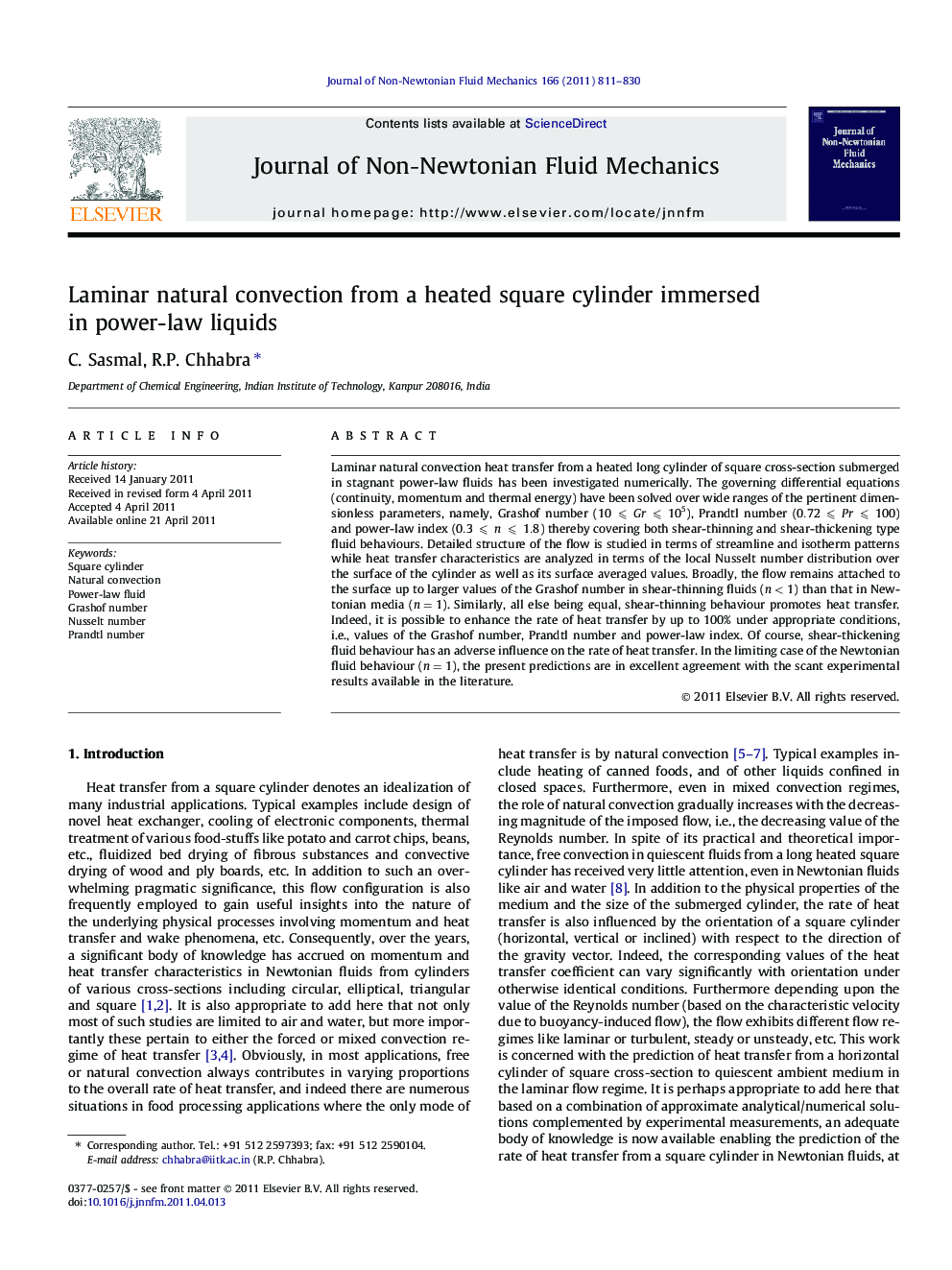| Article ID | Journal | Published Year | Pages | File Type |
|---|---|---|---|---|
| 671004 | Journal of Non-Newtonian Fluid Mechanics | 2011 | 20 Pages |
Laminar natural convection heat transfer from a heated long cylinder of square cross-section submerged in stagnant power-law fluids has been investigated numerically. The governing differential equations (continuity, momentum and thermal energy) have been solved over wide ranges of the pertinent dimensionless parameters, namely, Grashof number (10⩽Gr⩽105), Prandtl number (0.72⩽Pr⩽100) and power-law index (0.3⩽n⩽1.8) thereby covering both shear-thinning and shear-thickening type fluid behaviours. Detailed structure of the flow is studied in terms of streamline and isotherm patterns while heat transfer characteristics are analyzed in terms of the local Nusselt number distribution over the surface of the cylinder as well as its surface averaged values. Broadly, the flow remains attached to the surface up to larger values of the Grashof number in shear-thinning fluids (n<1n<1) than that in Newtonian media (n=1n=1). Similarly, all else being equal, shear-thinning behaviour promotes heat transfer. Indeed, it is possible to enhance the rate of heat transfer by up to 100% under appropriate conditions, i.e., values of the Grashof number, Prandtl number and power-law index. Of course, shear-thickening fluid behaviour has an adverse influence on the rate of heat transfer. In the limiting case of the Newtonian fluid behaviour (n=1n=1), the present predictions are in excellent agreement with the scant experimental results available in the literature.
► We model free convection from a square cylinder in power-law fluids. ► Shear-thinning fluid behaviour facilitates heat transfer. ► Dilatant fluid behaviour has an adverse effect on the rate of heat transfer. ► Shear-thinning behaviour delays the flow separation.
